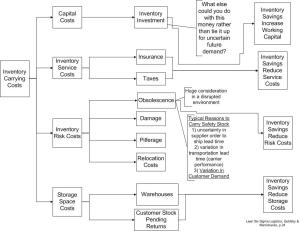- Success in controlling inventory in book publishing now should be defined as having inventory levels dropping more rapidly than book sales, while still meeting service level targets. Since print book sales are declining, successfully managing inventory means being able to anticipate/forecast declining patterns, yet still maintain high in-stock rates to maxmize existing demand. More working capital can then be used to invest in the digital side of the business.
- Decreasing inventory levels increases the number of transactions (like printings) that are required to resupply inventory. Obviously, printing for shorter supply timeframes means that you might, for example, print a title twice a year instead of once. Over a large title base, this can mean a huge percentage increase in reprint transactions that have to be processed.
- Increased numbers of transactions put pressure on staff, processes, and systems for greater efficiency. Most publishers are very leanly staffed at this point, and may not have the bandwidth to absorb signficantly higher transactions without major problems. Investment in better processes and/or systems could save publishers from having to make difficult staffing tradeoffs and suffering supply disruptions.
- Based on these observations and assuming continuing declines for print sales, book publishers will increasingly face tough tradeoffs between managing their inventory relative to sales, managing their transaction volumes, and covering staff overhead faced with diminishing print sales.
It seems counterintuitive during this digital transition away from the primacy of physical books, but book publishers that lack strong inventory systems and/or processes may need to invest soon for improved performance and sustainability. The risk of inventory ballooning while sales fall is one that can consume working capital and pollute a balance sheet, hampering a publisher’s flexibility to invest as needed in the digital business. A reasonable investment in improvements can save a lot of pain in the long term.
Tim Cooper




